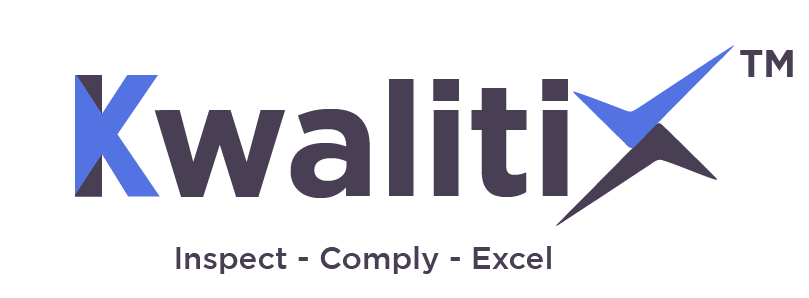Ensuring workplace safety should include more than periodic inspections and audits. To create a truly secure environment, safety practices must be seamlessly integrated into daily operations. This involves fostering a safety-oriented mindset among employees and making safety inspections a natural part of their work routine.
Safety Training and Awareness:
Organizations should invest in comprehensive safety training programs for all employees. Training sessions should cover various safety procedures, proper equipment usage, and emergency protocols. By empowering employees with knowledge and awareness, they can actively contribute to maintaining a safe working environment.
Leadership Commitment:
Strong leadership commitment is crucial in establishing a culture of safety within an organization. Managers and supervisors should lead by example, consistently demonstrating their dedication to safety measures. When employees see that their leaders prioritize safety, they are more likely to take safety protocols seriously.
Employee Involvement:
Encouraging employee involvement in safety initiatives fosters a sense of ownership and responsibility. Employees should be encouraged to report potential hazards, near-miss incidents, and safety improvement suggestions. Organizations can establish safety committees or focus groups to involve employees in safety decision-making processes.
Regular Safety Meetings:
Conducting regular safety meetings provides an opportunity to discuss safety-related topics, review incident reports, and share best practices. These meetings also serve as a platform for employees to voice their safety concerns and provide feedback on safety measures.

Safety Incentives:
Recognizing and rewarding employees for their contributions to maintaining a safe workplace can be a powerful motivator. Safety incentives, such as bonuses or recognition programs, can reinforce the importance of safety and encourage a proactive safety culture.
The Role of Employees in Safety:
Employees play a pivotal role in maintaining workplace safety. While safety inspections and audits provide essential evaluations, it is the employees’ commitment to safety practices that ultimately ensures a secure working environment.
Individual Responsibility:
Each employee must take individual responsibility for their safety and the safety of others. This includes adhering to safety protocols, using personal protective equipment (PPE), and following standard operating procedures.
Promoting a Reporting Culture:
A reporting culture is essential for identifying and addressing potential hazards promptly. Employees should feel comfortable reporting safety concerns without fear of reprisal. Reporting near-miss incidents is equally crucial, as it allows organizations to investigate and prevent future accidents.
Engaging in Safety Training:
Employees should actively participate in safety training sessions and stay updated on safety procedures and guidelines. Continuous learning and reinforcement of safety knowledge are vital to reducing workplace accidents.
Supporting Safety Initiatives:
Employees can support safety initiatives by actively participating in safety committees, sharing safety tips with colleagues, and advocating for safety improvements in their work areas.
Measuring the Effectiveness of Safety Initiatives:
To ensure continuous improvement in safety performance, organizations must regularly assess the effectiveness of their safety initiatives. This involves analyzing incident data, conducting periodic reviews, and implementing corrective actions as needed.
Analyzing Incident Data:
Organizations should analyze incident reports to identify patterns and trends. This data-driven approach helps pinpoint recurring safety issues and guides the implementation of targeted safety improvements.
Conducting Periodic Reviews:
Safety management systems should undergo periodic reviews to assess their effectiveness. This includes evaluating the implementation of safety policies, the functionality of safety equipment, and the success of safety training programs.
Improving Safety through Technology:
In the digital age, technology plays a vital role in streamlining safety management processes and enhancing workplace safety. Organizations can leverage various technological solutions to improve safety inspections, safety audits, and overall safety practices.
Safety Inspection Software:
Safety inspection software offers a more efficient and organized approach to conducting inspections. It enables safety officers to create digital checklists, capture real-time data, and document hazards and corrective actions. The software can also generate automated reports and analytics, providing valuable insights into safety trends and areas that require attention.
Safety Audit Apps:
Mobile safety audit apps empower auditors to perform audits on the go using smartphones or tablets. These apps facilitate data collection, enable auditors to take photos of safety hazards, and quickly record observations. The collected data can be synchronized with central databases, making it easier to track safety performance and manage corrective actions.

Internet of Things (IoT) Devices:
IoT devices can be integrated into the workplace environment to enhance safety monitoring. For instance, sensors can be installed to detect dangerous levels of gases, monitor equipment performance, or track employees’ location during emergencies. Real-time data from IoT devices can trigger alerts and prompt immediate actions to mitigate risks.
Virtual Reality (VR) and Augmented Reality (AR):
VR and AR technologies offer immersive training experiences for employees, especially in high-risk industries. Workers can engage in virtual simulations of hazardous situations, allowing them to practice safety protocols and emergency responses in a controlled environment. This type of training enhances preparedness and reduces the likelihood of accidents.
Artificial Intelligence (AI) for Predictive Analytics:
AI-powered algorithms can analyze vast amounts of safety data and predict potential hazards. By identifying patterns and trends, AI can help organizations proactively address safety risks before they escalate into accidents or incidents.
Creating Customized Safety Programs:
No two organizations are the same, and each workplace carries its unique set of risks and safety challenges. Therefore, it is essential to develop customized safety programs that cater to the specific needs of the organization.
Risk Assessments:
Conducting thorough risk assessments is the foundation of a customized safety program. Organizations should identify and prioritize potential hazards based on their severity and likelihood of occurrence. This enables them to allocate resources effectively and focus on the most critical safety concerns.
Tailored Training:
Safety training should be tailored to address the specific risks and tasks involved in each job role. Customized training programs ensure that employees receive relevant and practical safety knowledge that applies directly to their work responsibilities.
Employee Engagement:
Involving employees in the development of safety programs fosters a sense of ownership and commitment. Seek feedback from workers, incorporate their insights into safety policies, and recognize their contributions to workplace safety.
Conclusion:
Safety inspections and safety audits are invaluable tools for maintaining workplace safety, but they are just the beginning of a comprehensive safety program. Organizations must prioritize safety at all levels, from leadership commitment to employee involvement. By integrating safety measures into daily operations and fostering a culture of safety, organizations can create a work environment where safety is paramount. Regular safety inspections and audits, coupled with active employee participation, will contribute to a safer and more productive workplace for everyone involved.

